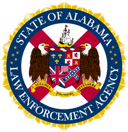Before obtaining an Alabama driver license, teens and their parents/guardians should review the information on STAR I.D., a step beyond an ordinary Alabama driver license that fully meets all requirements of REAL-ID Act of 2005. Effective October 1, 2021, every air traveler will need a REAL ID compliant license/ID (STAR ID) or another form of identification for domestic air travel. See TSA’s website for a full list acceptable identification for domestic air travel
Conceptual Framework
The Private High School Driver and Traffic Safety Education require a minimum of 70 clock hours or one semester.
The Private High School Driver and Traffic Safety Education program is offered as an elective course primarily for tenth-grade students who are fifteen years of age or older and who are eligible to obtain an Alabama Learner License.
The curriculum is divided into two distinct phases of instruction. The two phases are the Classroom Instruction phase and the Behind-the-Wheel Instruction phase.
The goal of the Private High School Driver and Traffic Safety Education program – to learn the fundamentals of safe and responsible driving within a variety of environments. The goal is attained through the required minimum 30 hours of classroom instruction. Actual hands-on or performance-based driving experience in a vehicle under the supervision of a certified driver education teacher is also required. Optional phases of the program – simulation and multi-vehicle driving range experiences – may also be included in the course. It is recommended that students complete at least one of these phases, if not both, before progressing to the behind-the-wheel phase of driving instruction.
Students should complete the classroom phase before beginning the on-street driving phase. The classroom phase should include, but not limited to, content regarding highway license requirements, traffic laws, responsible ownership, driving procedures and maneuvers, factors related to youthful drivers, physical and mental impairments, other highway users, and driving environments. It is important for students to develop an understanding of how these areas interrelate in order to be adequately prepared to understand the complex highway transportation system and to be aware of the physical, mental and social tasks involved in driving.
The Behind-the-Wheel-Instruction phase is performance-based as it gives the beginning drivers actual driving experience under the supervision of a certified driver education teacher during actual on-street, behind-the-wheel driving in an automobile with dual controls. The nine areas mastered in the classroom instruction phase are applied during the actual on-street, behind-the-wheel phase of the course.
Varying conditions exists throughout the state with individual students, facilities and circumstances that necessitate different time frames for fulfilling the competencies required for compliance with this performance-based program. No specific number of hours are required for students to complete the behind-the-wheel phase of driving; however, for overall planning and scheduling purposes, it is recommended that approximately six hours per student be allowed to complete this phase of instruction.
Learner License
A student enrolled in a Driver and Safety Education course approved by the Director of Public Safety may legally drive on the streets and highways of Alabama without a learner license if the student is driving a driver education automobile with a certified driver education instructor during the regular school day.
Teacher-Pupil Ratio
To ensure adequate driving time, safety, and quality instruction, consideration should be given to proper scheduling of driver education students. Optimally, enrollment should average no more than 15 students in each class per semester in a 6- or 7-period day, while enrollment in a block schedule should average no more than 12 students per class.
Mandatory Occupant Restraints
All occupants in the driver education vehicle must be required to demonstrate compliance with mandatory restraint device laws.
Third-Party Testing Program
Students may take advantage of the Third-Party Testing program in school systems where the program is available. The Third-Party Testing program was implemented in response to Act No. 2012-501 that allows private high school driver education teachers to be a designated third-party testing agent of the Alabama Department of Public Safety to administer the driver portion of the licensing exam. All Third-Party Testing routes will be approved by a representative of the Department of Public Safety.
Private High School
- Driver Education Information Request Form
- Organizational Procedures
- Parent Permission Form
- IRS W-9 Form
Instructor Documents
- Instructions for Schools and Class Instructors
- 3rd Party Testing Information
- 3rd Party Testing Skills Checklist
- Additional Certification in Driver and Traffic Safety Education
- An individual who:
- holds a valid Alabama Professional Educator Certificate or Alabama Professional Leadership Certificate and
- verifies credit earned for the required basic and advanced driver education coursework may apply for a Secondary Professional Educator Certificate endorsed in Driver and Traffic Safety Education.
- An individual who:
